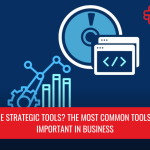Introduction
Change is a constant in the business world, driven by technological advancements, market shifts, or internal dynamics. Organisations must implement structured approaches to navigate these changes effectively to help them transition smoothly and maintain stability. This blog post delves into the various types of change organisations encounter, the concept of change management, and why it's vital for organisational success. We'll also explore six distinct types of organisational change management strategies, detailing how each type can be applied effectively. Finally, we'll address common challenges in change management and discuss strategies to overcome them.
What Are the Different Types of Change?
In the realm of change management, understanding the different types of change is crucial for effectively guiding an organisation through transitions. These changes can vary in scope, impact, and complexity, each requiring a tailored approach to management. Here’s an elaboration on the primary types of change:
1. Developmental Change
Developmental change involves enhancing or improving existing organisational processes, systems, or structures. It is often incremental and focuses on optimising current operations rather than overhauling them. Examples include improving workflow efficiency, enhancing employee skill sets, or upgrading software systems. Developmental change is generally planned and proactive, aimed at continuous improvement and maintaining competitiveness in the market.
2. Transitional Change
Transitional change occurs when an organisation shifts from one state to another, often involving implementing new processes, technologies, or strategies. This type of change is more significant than developmental change and requires careful planning and management to minimise disruptions. Examples include mergers and acquisitions, restructuring, or implementing new technology systems. Transitional change can be challenging because it often involves letting go of old ways of working and embracing new ones, requiring significant buy-in from employees and other stakeholders.
3. Transformational Change
Transformational change is the most profound and far-reaching type of change. It involves a fundamental shift in the organisation’s culture, values, operations, and strategy. Transformational change is often driven by external factors such as market disruptions, technological advancements, or significant shifts in customer expectations. Examples include a complete company rebranding, entering new markets, or adopting a new business model. This type of change requires strong leadership, clear communication, and a strategic vision to navigate the complexities and ensure alignment across all levels of the organisation.
4. Strategic Change
Strategic change involves altering an organisation's overall strategy to achieve long-term goals. This could include changing the business model, entering new markets, or developing new products or services. Top management often initiates strategic change and requires a clear understanding of the external environment and internal capabilities. It is critical for ensuring the organisation’s long-term success and adaptability in a competitive landscape.
5. Reactive vs. Proactive Change
Reactive change occurs in response to external pressures, such as a sudden market shift, a new regulation, or a crisis. It is typically unplanned and requires quick decision-making to mitigate risks and adapt to new circumstances. On the other hand, proactive change is anticipatory and involves preparing for future challenges or opportunities. Proactive change is planned and deliberate, allowing the organisation to stay ahead of the curve and maintain a competitive edge.
6. Planned vs. Unplanned Change
Planned change is intentional and involves a structured process to implement new strategies, processes, or technologies. A change management plan often guides it and aims to achieve specific goals or outcomes. Unplanned change occurs unexpectedly and may result from sudden events like economic downturns, natural disasters, or technological failures. Managing unplanned change requires agility and the ability to quickly adapt to new circumstances to minimise disruptions and maintain stability.
7. Incremental vs. Radical Change
Incremental change is gradual and involves making small adjustments over time, allowing the organisation to evolve slowly and steadily. This approach is less disruptive and easier to manage, as it focuses on continuous improvement. Radical change, on the other hand, is abrupt and involves significant shifts in the organisation’s operations, strategy, or culture. Radical change is often necessary in response to major external challenges or opportunities and requires strong leadership and a clear vision to implement successfully.
Understanding these different types of change allows organisations to better prepare for and manage transitions, ensuring that they can navigate the complexities of change effectively and emerge stronger and more resilient.
What Is Change Management?
Change management is an organisation's structured approach to managing the people, processes, and technology involved in implementing change. It encompasses various activities, from planning and communication to training and support. Change management aims to ensure that changes are implemented smoothly, with minimal disruption, and that the organisation can realise the intended benefits.
At its core, change management is about helping people transition from the current state to the desired future state. This involves understanding the impact of change, addressing the concerns of those affected, and providing the necessary support to ensure that the change is adopted and sustained.
According to Gartner, the average organisation has implemented five significant company-wide changes in the last three years, and nearly 75% anticipate increasing the number of major change initiatives in the next three years. However, half of these initiatives fail, with only 34% achieving clear success.
Why Is Change Management Important?
Change management is a crucial aspect of any organisation’s strategy. It ensures that changes are implemented smoothly and successfully while minimising resistance and maximising engagement. Its importance spans various dimensions, including business continuity, employee morale, and overall organisational success.
1. Facilitates Smooth Transitions
Change management provides a structured approach to transitioning individuals, teams, and organisations from their current state to a desired future state. Change can lead to confusion, resistance, and failure without a clear plan. Effective change management ensures a smooth transition, reducing disruptions to operations and helping employees adapt to new processes, technologies, or organisational structures.
2. Minimises Resistance to Change
Human nature often gravitates towards stability and predictability, making resistance to change a common challenge. Change management is essential because it addresses this resistance proactively. Organisations can reduce opposition and increase acceptance by involving employees in the change process, communicating the reasons for the change, and addressing concerns. When employees understand the need for change and feel that their voices are heard, they are more likely to support the initiative.
3. Enhances Employee Morale and Engagement
Change can be unsettling, leading to uncertainty and fear among employees. Change management plays a vital role in maintaining and even boosting employee morale during times of change. Organisations can keep employees engaged and motivated by providing clear communication, offering training and support, and showing empathy. When employees feel supported, they are more likely to embrace the change and contribute to its success.
4. Ensures Successful Implementation of Change Initiatives
The ultimate goal of change management is to ensure that change initiatives are successful. This involves implementing the change and ensuring that it is sustainable over the long term. Effective change management includes planning, execution, monitoring, and adjustment of the change process. By doing so, organisations can achieve the desired outcomes and avoid the pitfalls that can lead to failure.
5. Align change with Organisational Goals
Change management ensures that change initiatives are aligned with the organisation's overall goals and strategy. This alignment is critical because changes that are not in sync with the organisation’s objectives can lead to wasted resources, confusion, and a lack of direction. By aligning change with strategic goals, change management helps organisations move forward in a unified and purposeful manner.
6. Reduces Costs and Risks
Unmanaged or poorly managed change can lead to significant costs, both financially and in terms of lost opportunities. Change management helps to mitigate these risks by ensuring that changes are carefully planned and executed. This includes identifying potential risks, developing contingency plans, and efficiently using resources. By reducing the costs and risks associated with change, organisations can achieve a higher return on investment.
7. Builds a Culture of Adaptability and Resilience
In today’s fast-paced business environment, organisations must be able to adapt quickly to changes in the market, technology, and customer expectations. Change management fosters a culture of adaptability and resilience by teaching employees how to embrace change and thrive in a dynamic environment. Over time, this culture of adaptability becomes a competitive advantage, enabling the organisation to respond effectively to new challenges and opportunities.
8. Improves Communication and Collaboration
Change management emphasises the importance of communication throughout the change process. Clear, consistent communication helps to keep everyone informed, reduces rumours and misinformation, and fosters a collaborative environment. Effective communication leads employees to work together towards common goals, leading to a more cohesive and productive organisation.
9. Supports Continuous Improvement
Change management is not just about managing one-time changes; it also supports continuous improvement. By embedding change management practices into the organisational culture, companies can create a framework for ongoing innovation and improvement. This continuous improvement mindset ensures that the organisation remains competitive and can adapt to future changes more effectively.
[Benchmarking Your Performance and Making Continuous Improvements course]
10. Ensures Compliance and Reduces Legal Risks
In some cases, organisational changes may involve regulatory or legal implications. Effective change management ensures that all changes comply with relevant laws and regulations, reducing the risk of legal issues. This is particularly important in industries where compliance is critical, such as healthcare, finance, and manufacturing.
Table: KPIs of change management
The Six Types of Change Management for Organisations
Change management strategies vary depending on an organisation's type of change. Here, we explore six distinct types of change management and provide steps for effectively applying each.
1. Strategic Change Management
Definition: Strategic change management involves adjusting the organisation’s overall strategy, including shifts in markets, product offerings, or business models. This type of change is often driven by external factors such as market competition, technological advancements, or changes in consumer behaviour.
Steps to Apply:
- Assessment: Begin by conducting a thorough analysis of the current market landscape, internal capabilities, and potential opportunities or threats.
- Vision Development: Develop a clear vision of the desired future state, including specific goals and objectives.
- Engagement: Involve key stakeholders early in the process to gather insights, gain buy-in, and build a coalition of support.
- Communication: Clearly articulate the strategic vision and the reasons behind the change to all employees, ensuring alignment and understanding.
- Implementation: Roll out the strategic change in phases, allowing for adjustments based on feedback and performance metrics.
- Monitoring and Adjustment: Continuously monitor the implementation process, making necessary adjustments to stay on course.
2. Structural Change Management
Definition: Structural change management focuses on altering the organisational hierarchy, roles, responsibilities, or physical layout. This type of change is often necessary when an organisation undergoes mergers, acquisitions, or significant growth.
Steps to Apply:
- Organisational Review: Conduct a thorough review of the existing organisational structure to identify areas that need adjustment.
- Design New Structure: Develop a new organisational structure that aligns with the strategic goals and improves efficiency.
- Role Clarification: Clearly define new roles and responsibilities, ensuring that all employees understand their place in the new structure.
- Communication Plan: Communicate the structural changes to the entire organisation, emphasising the benefits and addressing any concerns.
- Training and Support: Provide training and support to help employees transition into their new roles and responsibilities.
- Evaluation: Regularly evaluate the effectiveness of the new structure and make necessary adjustments to optimise performance.
3. Cultural Change Management
Statistics show that organisations with robust cultures can achieve up to 72% higher levels of employee engagement, which is why they should start implementing cultural change management. Cultural change management involves shifting an organisation's underlying values, beliefs, and behaviours. This type of change is often required to align the organisational culture with new strategic goals or to foster a more collaborative and innovative work environment.
Steps to Apply:
- Cultural Assessment: Conduct an assessment to understand the current organisational culture, including strengths and areas for improvement.
- Define Desired Culture: Clearly define the desired cultural attributes that align with the organisation’s vision and values.
- Leadership Alignment: Ensure that leadership at all levels is aligned with and committed to cultural change.
- Communication and Engagement: Communicate the cultural change vision to employees and involve them in the process through workshops, focus groups, and surveys.
- Role Modelling: Leaders should model the desired behaviours and values, setting an example for the rest of the organisation.
- Reinforcement: Reinforce the cultural change through recognition programs, performance management systems, and continuous feedback.
4. Technological Change Management
Definition: Technological change management involves the introduction of new technologies or the upgrading of existing systems. This type of change is often driven by the need to improve efficiency, enhance capabilities, or stay competitive in a technology-driven market.
Steps to Apply:
- Technology Assessment: Evaluate current technology systems and identify areas where new technologies can provide value.
- Planning: Develop a detailed implementation plan that includes timelines, resource allocation, and potential risks.
- Stakeholder Engagement: Involve key stakeholders in the selection and implementation process to ensure that the new technology meets the organisation’s needs.
- Training and Support: Provide comprehensive training and support to employees to ensure a smooth transition to the new technology.
- Pilot Testing: Implement a pilot test to identify any issues or areas for improvement before full-scale deployment.
- Full Deployment and Monitoring: Roll out the technology across the organisation and monitor its performance, making adjustments as needed.
Table: Comparison of the different types of change management
5. Organisational Change Management
Definition: Organisational change management is a broad approach that encompasses all types of changes within an organisation, including strategic, structural, cultural, and technological changes. This holistic approach ensures that all aspects of the organisation are aligned with the change.
Steps to Apply:
- Change Assessment: Conduct a comprehensive assessment to identify the areas of the organisation that require change.
- Change Vision and Strategy: Develop a clear vision and strategy that outlines the desired future state and the steps to achieve it.
- Leadership and Governance: Establish a governance structure to oversee the change process and ensure organisational alignment.
- Communication and Engagement: Develop a communication plan that keeps all stakeholders informed and engaged throughout the change process.
- Implementation: Implement the change in phases, allowing for adjustments based on feedback and performance metrics.
- Sustainability: Ensure the change is embedded in the organisation’s culture and processes to sustain long-term benefits.
6. Personnel Change Management
Definition: Personnel change management focuses on managing changes related to the organisation’s workforce, such as hiring, layoffs, restructuring, or leadership changes. This type of change is often sensitive and requires careful handling to maintain morale and productivity.
Steps to Apply:
- Workforce Assessment: Conduct an assessment to understand the current workforce and identify areas where changes are needed.
- Change Planning: Develop a plan that outlines the changes to be made, including timelines, communication strategies, and support systems.
- Communication: Clearly communicate the reasons for the personnel changes to the affected employees and provide support during the transition.
- Support and Counselling: Offer counselling services, career support, and other resources to help employees navigate the change.
- Leadership Development: Invest in leadership development programs to prepare leaders for new roles and responsibilities.
- Monitoring and Feedback: Monitor the impact of the personnel changes and gather feedback to make necessary adjustments.
[Forward-Thinking Strategy & Change Models course]
Challenges of Change Management
While change management is essential, it is not without its challenges. Organisations often face resistance from employees, communication breakdowns, and difficulties in sustaining change. Here are some common challenges and strategies to address them:
1. Resistance to Change
One of the most common challenges in change management is employee resistance. People are often comfortable with the status quo and may fear the unknown or feel threatened by new processes, technologies, or organisational structures. Resistance can manifest as passive opposition decreased productivity, or outright defiance.
How to Address It: To mitigate resistance, involving employees early in the change process is crucial. Transparent communication about the reasons for change and how it will benefit both the organisation and employees can alleviate fears. Providing support through training and resources, as well as recognising and addressing concerns, can also reduce resistance. Leaders should also identify change champions within the organisation who can influence and encourage others to embrace the change.
2. Lack of Effective Communication
Poor communication is another significant barrier to successful change management. If the reasons for change, the process, and the expected outcomes are not clearly communicated, employees may feel uncertain and disconnected, leading to confusion and a lack of buy-in.
How to Address It: Establishing a comprehensive communication plan is essential. This plan should outline what information will be shared, who will deliver it, and when it will be communicated. Regular updates, open forums for questions, and feedback loops can help ensure everyone is on the same page. Tailoring the message to different audiences within the organisation can also enhance understanding and acceptance.
3. Insufficient Leadership Support
Change initiatives often fail because leadership lacks strong, visible support. Without clear endorsement from the top, employees may question the change's importance or feel uncertain about its long-term viability.
How to Address It: Leadership must actively participate in the change process, demonstrating commitment through their actions and words. This includes endorsing the change and participating in key activities, such as training sessions or progress meetings. Leaders should also be available to address concerns and provide guidance, reinforcing the importance of the change and its alignment with the organisation’s goals.
4. Inadequate Resources and Budget
Change initiatives can stall or fail if they are not adequately resourced. This includes financial resources, time, personnel, and tools necessary to implement the change effectively. When resources are stretched thin, the quality and pace of change can suffer.
How to Address It: Organisations need to plan and allocate resources for change management carefully. This may involve securing a dedicated budget, assigning sufficient personnel, and providing the necessary tools and training. Regularly reviewing resource allocation throughout the change process can help ensure that the initiative stays on track and adjustments are made as needed.
5. Change Fatigue
In organisations where change is frequent, employees may experience change fatigue, leading to burnout, disengagement, and a diminished ability to adopt new initiatives effectively. This is particularly challenging in industries where rapid changes are the norm.
How to Address It: To combat change fatigue, it’s important to prioritise and sequence changes carefully. Not all changes need to happen simultaneously, and staggering initiatives can help prevent overwhelm. Additionally, providing mental health support and promoting a culture of resilience can help employees manage the stress associated with frequent changes. Recognising and celebrating small wins throughout the change process can also boost morale and maintain momentum.
6. Failure to Embed Change
Even if a change is initially successful, the organisation may revert to old ways of doing things if the change is not properly embedded into the organizational culture. This can lead to the change's failure in the long term.
How to Address It: Organisations must embed changes into their culture to ensure that changes stick. This involves aligning new practices with organisational values, reinforcing new behaviours through ongoing training and support, and integrating changes into performance metrics and reward systems. Leadership should continue to model the change and reinforce its importance over time, ensuring that it becomes part of the organisation's DNA.
[Change & Complexity Management course]
Conclusion
Change is inevitable in today’s dynamic business environment, and how organisations manage it can determine their success or failure. By understanding the different types of change and implementing effective change management strategies, organisations can confidently navigate the complexities of transformation. Whether it’s strategic, structural, cultural, technological, organisational, or personnel change, each type requires a tailored approach considering its unique challenges and opportunities. Organizations can survive and thrive in change by addressing the common challenges of change management and applying the strategies discussed in this blog post.
Elevate your organisation's ability to navigate change with our course, "Change Management Strategies." This comprehensive program equips you with the tools and insights needed to effectively manage any type of change, ensuring your team is prepared for the challenges ahead. Gain practical knowledge and strategies to lead successful transformations, turning potential obstacles into opportunities for growth. Enrol today and empower your organisation to thrive in the face of change.
[insert course link]
FAQs:
What is change management?
- Answer: Change management is a structured approach to transitioning individuals, teams, and organisations from a current state to a desired future state. It involves planning, implementing, and supporting change to minimise disruption and achieve lasting benefits.
Why is change management important?
- Answer: Change management is crucial because it helps organisations adapt to new challenges, seize opportunities, and remain competitive. It also minimises the risks associated with change, such as resistance, confusion, and productivity loss.
What are the different types of organisational change?
- Answer: Organisational changes can be classified into several types, including strategic change, structural change, technological change, and people-centred change. Each type requires specific approaches and strategies to manage effectively.
What are common challenges in change management?
- Answer: Common challenges include resistance to change, lack of communication, insufficient resources, and inadequate leadership support. Addressing these challenges is key to successful change implementation.
How can organisations ensure successful change management?
- Answer: Successful change management requires clear communication, strong leadership, employee involvement, and continuous monitoring and adaptation. Using a structured approach, such as a change management model, can also help guide the process effectively.








![أفضل كورسات في الأمن السيبراني [2024]](https://holistiquetraining.com/storage/أفضل-كورسات-في-الأمن-السيبراني-150x150.png)










